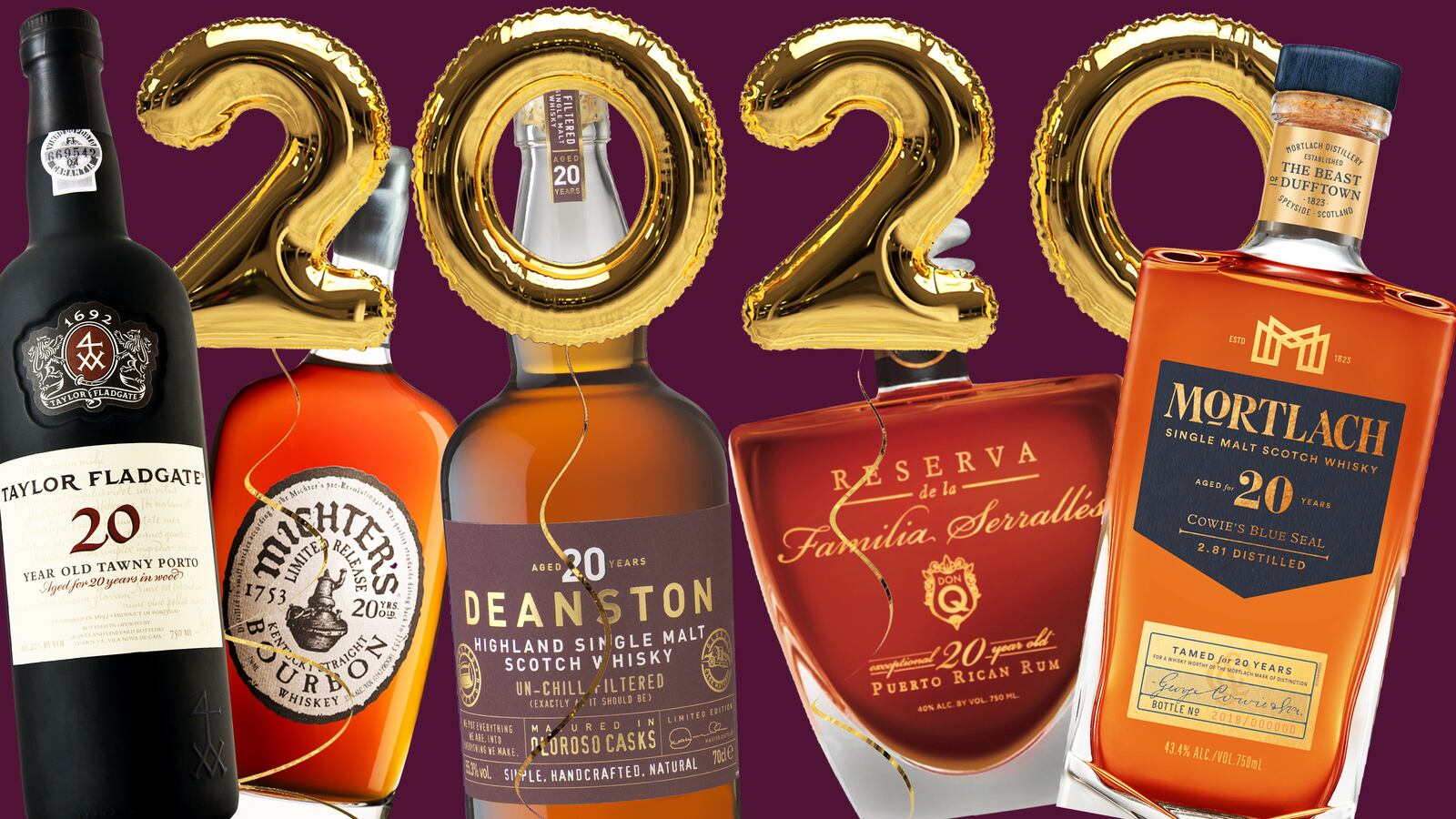Every year, a Half Full columnist draws the short straw and writes about the best things they drank during the previous 12 months. It’s an unenviable task, since there is usually a surfeit of delicious things to choose from and no matter what you feature someone inevitably has a different opinion. This year, I didn’t mind when Lew Bryson volunteered to take the assignment.
Since Lew stepped up (he turned in a spot-on recap that is a fun read), I feel it’s my duty to address the other seasonal task at hand: determine the signature drink of 2020.
Sure, you could go all Great Gatsby, in homage to the Roaring Twenties. But, thanks to Hollywood, rum runners and bootleggers are popular every few years, as reflected in movies and on TV.
I also analyzed the different liquor categories. While one might be able to make a case that this will be the year of American single malt or domestic brandy, I don’t feel strongly enough about either to definitively tie them to 2020.
So where does that leave us? A few years ago, I wrote a column about drinking 18-year-old single malt Scotch in 2018. That was easy enough, since just about every distillery puts out a whisky of that age. Twenty-year-olds, however, are rarer, though they do seem to be proliferating. Perhaps due to the cult popularity of Pappy Van Winkle 20-Year-Old Bourbon, a new range of excellent two-decade-old bottles now exists.
These spirits were produced in 2000, as folks anxiously waited for Y2K to cripple the country. That didn't happen, but the burgeoning resurgence of spirits and cocktails did. At the time, drinkers preferred beer and wine; the thought of spending hundreds, let alone thousands, of dollars on a bottle of hard alcohol was laughable. It was a Martini world, and by Martini, I mean a range of crazy concoctions served in a cocktail glass.
Pioneering craft cocktail bar Milk & Honey opened on New Year’s Eve 1999. Most of the other now famous watering holes around the United States would come years later.
But prescient distillers were quietly plying their trade, putting away their spirits and hoping that at some point soon the public would appreciate their products. Well, the future is finally here. Cheers!
Joining the rarified company of unicorn bottles, including Pappy Van Winkle, George T. Stagg and Hibiki 17, is Michter’s 20-Year-Old Kentucky Straight Bourbon. The suggested retail price is $700 but the whiskey normally sells for much, much more—that is, if you can find it. I was able to locate a few bottles in stores, which were currently selling it for between $2,500 and $3,000. It certainly doesn’t help that it recently took the top ranking in Jim Murray’s Whisky Bible 2020 for bourbon aged between 16 and 20 years. But now is actually the time to look for a bottle if you want to add one to your collections, since Michter’s just released an allotment of 20 year olds a few weeks ago that should be in stores now.
The first time I remember tasting Mortlach Single Malt Scotch was in 2013, when it was rereleased in the United States.
While I hadn’t tried it as a single malt, I probably had already enjoyed it in a blended Scotch. Mortlach has a heavy and unctuous flavor that is more like the maritime whiskies from Scotland’s west coast than the Speyside distilleries it’s close to, which makes it a favorite of whisky blenders.
It doesn’t surprise me that Mortlach offers the 20-year-old Cowie’s Blue Seal ($200) and not a 21-year-old or even an 18-year-old given that it does most things its own special way—from its meaty flavor profile to its signature set of six stills and intricate distilling protocol. I guess that is Mortlach’s right, given that it opened in 1823 and was the first distillery in Dufftown to get a license. The robust 20-year-old is made for sipping and pondering, which seems just perfect for 2020.
One of the other few Scotch distilleries to bottle a 20-year-old is Deanston, which offers a limited-edition single malt ($179) that was aged exclusively in used oloroso sherry casks. As a result, as soon as you open the cork, like a genie, sweet rich raison notes come flooding out. The distillery is just a short drive from the William Wallace Monument in Stirling, Scotland, but this whisky is no fighter—even at 55-percent ABV it is quite quaffable. You may want to order a couple of bottles, since you could easily go through them in the next 12 months.
One of the rarest rums on the market today is Don Q’s 20-Year-Old Reserva de la Familia Serrallés special-edition. But a taste of this sought-after spirit, naturally, doesn’t come cheap—the suggested retail price for a bottle is $1,865 and it often sells for more. It was originally created to honor the Puerto Rican brand’s 150 anniversary and it was aged in charred American oak barrels. The rum, as you would expect of such a rare spirit, comes in an impressive decanter and even a small suitcase.
Port is quietly having a moment. From 1998 to 2018, according to IWSR Drinks Market Analysis, sales have grown by 31-percent and fans of the fortified wine can easily find a number of 20-year-old bottlings on store shelves. One of my favorites is Taylor Fladgate’s 20-Year-Old Tawny Port ($55), which is made in Portugal’s Douro Valley from six different types of grapes, including Touriga Nacional, Touriga Franca and Tinta Barroca. It has notes of wood, spice, fruit (think figs) and a real nutty quality. After a few glasses, you’ll understand why port sales are growing.

